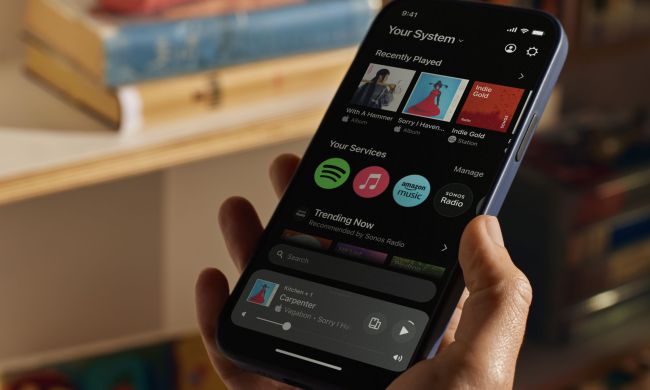Sonos likely anticipated that some of its customers would be unhappy to hear that their older audio products would soon stop receiving software updates, but few could have predicted the massive social media outcry the announcement provoked. So in an effort to calm the outrage, Sonos CEO Patrick Spence has penned an open letter to customers, in hopes of clarifying the company’s previous communication:
“We heard you. We did not get this right from the start. My apologies for that and I wanted to personally assure you of the path forward:
First, rest assured that come May, when we end new software updates for our legacy products, they will continue to work just as they do today. We are not bricking them, we are not forcing them into obsolescence, and we are not taking anything away. Many of you have invested heavily in your Sonos systems, and we intend to honor that investment for as long as possible. While legacy Sonos products won’t get new software features, we pledge to keep them updated with bug fixes and security patches for as long as possible. If we run into something core to the experience that can’t be addressed, we’ll work to offer an alternative solution and let you know about any changes you’ll see in your experience.
Secondly, we heard you on the issue of legacy products and modern products not being able to coexist in your home. We are working on a way to split your system so that modern products work together and get the latest features, while legacy products work together and remain in their current state. We’re finalizing details on this plan and will share more in the coming weeks.
While we have a lot of great products and features in the pipeline, we want our customers to upgrade to our latest and greatest products when they’re excited by what the new products offer, not because they feel forced to do so. That’s the intent of the trade-up program we launched for our loyal customers.
Thank you for being a Sonos customer. Thank you for taking the time to give us your feedback. I hope that you’ll forgive our misstep, and let us earn back your trust. Without you, Sonos wouldn’t exist and we’ll work harder than ever to earn your loyalty every single day.
If you have any further questions please don’t hesitate to contact us.”
Though it’s far from the reversal of the decision that many upset customers were likely hoping for, it is a reiteration of Sonos’ commitment to preserving as much of its older products’ functionality as possible, and for as long as possible.
Will this be enough to keep its usually highly loyal base of buyers with the company in the future? We’ll have to wait and see how folks respond.
Spence’s letter should, at the very least, calm any fears that people’s older Sonos products like the Connect, Connect:Amp, and Play:5 first-gen will suddenly stop working once May 2020 rolls around. However, that was never a genuine problem. Sonos said from the start that its customers could keep using the older devices if they chose, but that doing so would likely mean unpredictable support for some features like streaming music.
That said, it’s easy to see why people may have jumped to that conclusion. Sonos’ “trade-up” program involves permanently destroying the software on these legacy products so that they can’t be used by anyone, effectively making them electronic waste. Despite Sonos’ offer to responsibly recycle them if facilities that do so don’t exist near customers’ homes, the message wasn’t a welcome one: We’re encouraging you to disable what is today a perfectly working product, in exchange for 30% off a new one.
However, Spence’s letter does contain an optimistic note for those who refuse to relegate their older gear to the trash heap. Originally, Sonos said that it would be possible to operate older products on their own network, separate from newer products that would be prevented from getting software updates if the older ones stayed connected.
Unfortunately, that would mean that the two kinds of Sonos devices could never play the same music in sync, or even be controlled from within the same instance of the Sonos app. Hardly an ideal workaround. When Spence says that “ee are working on a way to split your system so that modern products work together and get the latest features, while legacy products work together and remain in their current state,” it sounds as though there may be a way to keep the old and new devices on the same system, without impacting the newer products.
If it works, it would be a reasonable compromise, and would also mean that many people who were facing a reinvestment of hundreds or thousands of dollars could put that off — possibly for years to come.
As one of the very first wireless, whole-home audio companies, Sonos is also one of the first to encounter hard limits imposed by old hardware. But it won’t be the last. Virtually all of our smart home technology will face similar hurdles in the future. Will Sonos’ experience serve as a cautionary tale to be heeded, or ignored?



